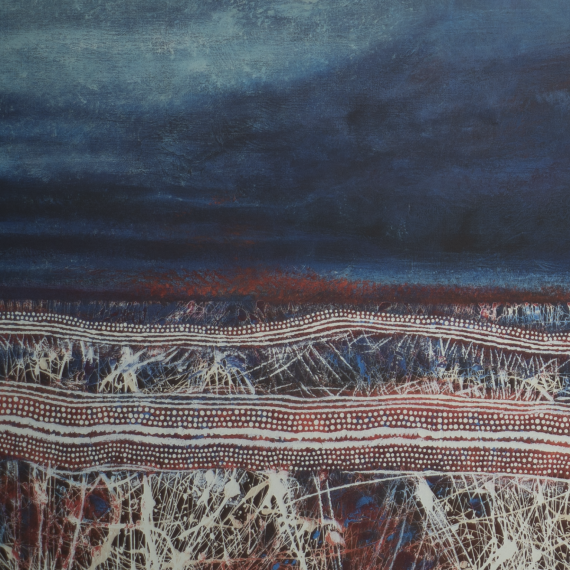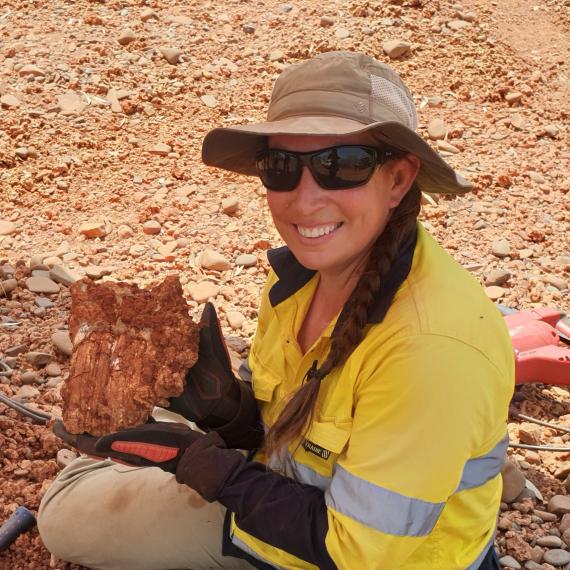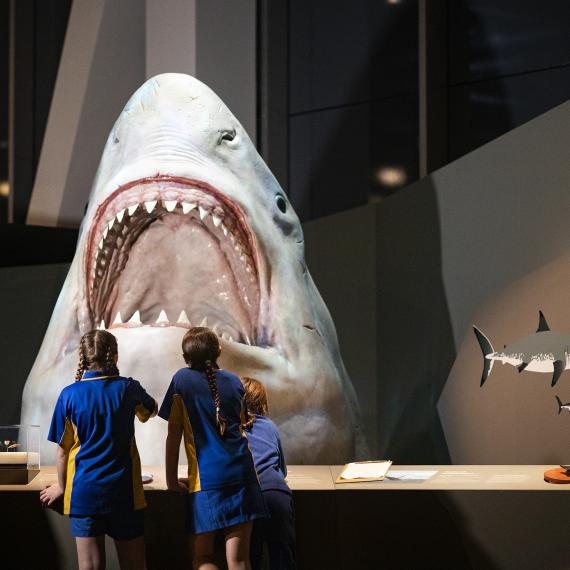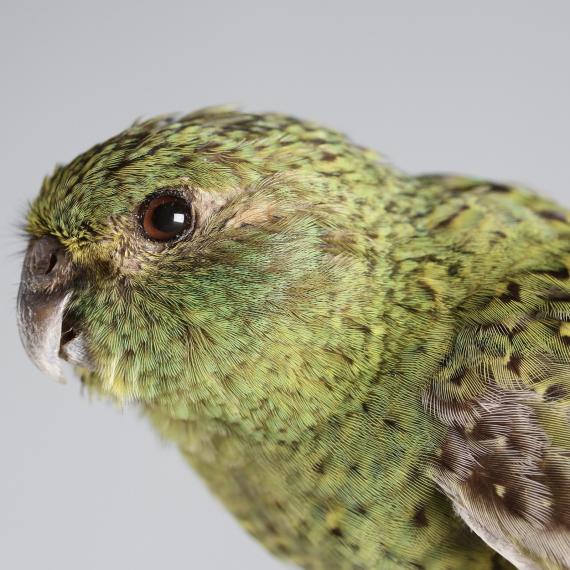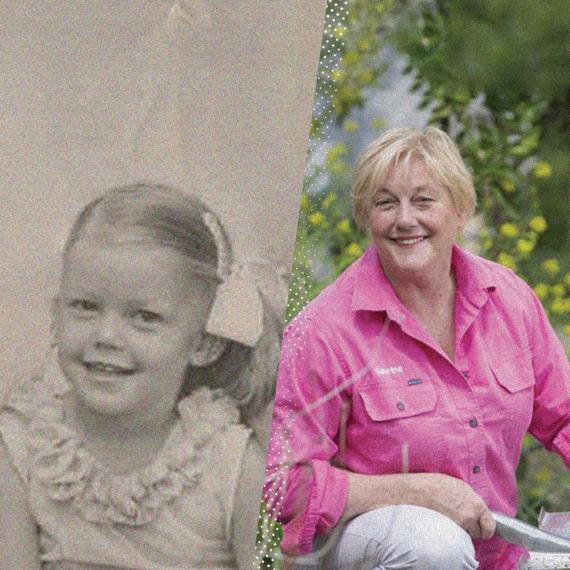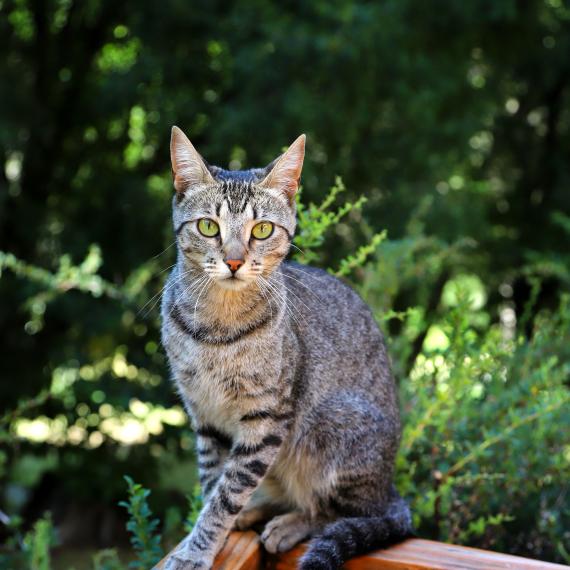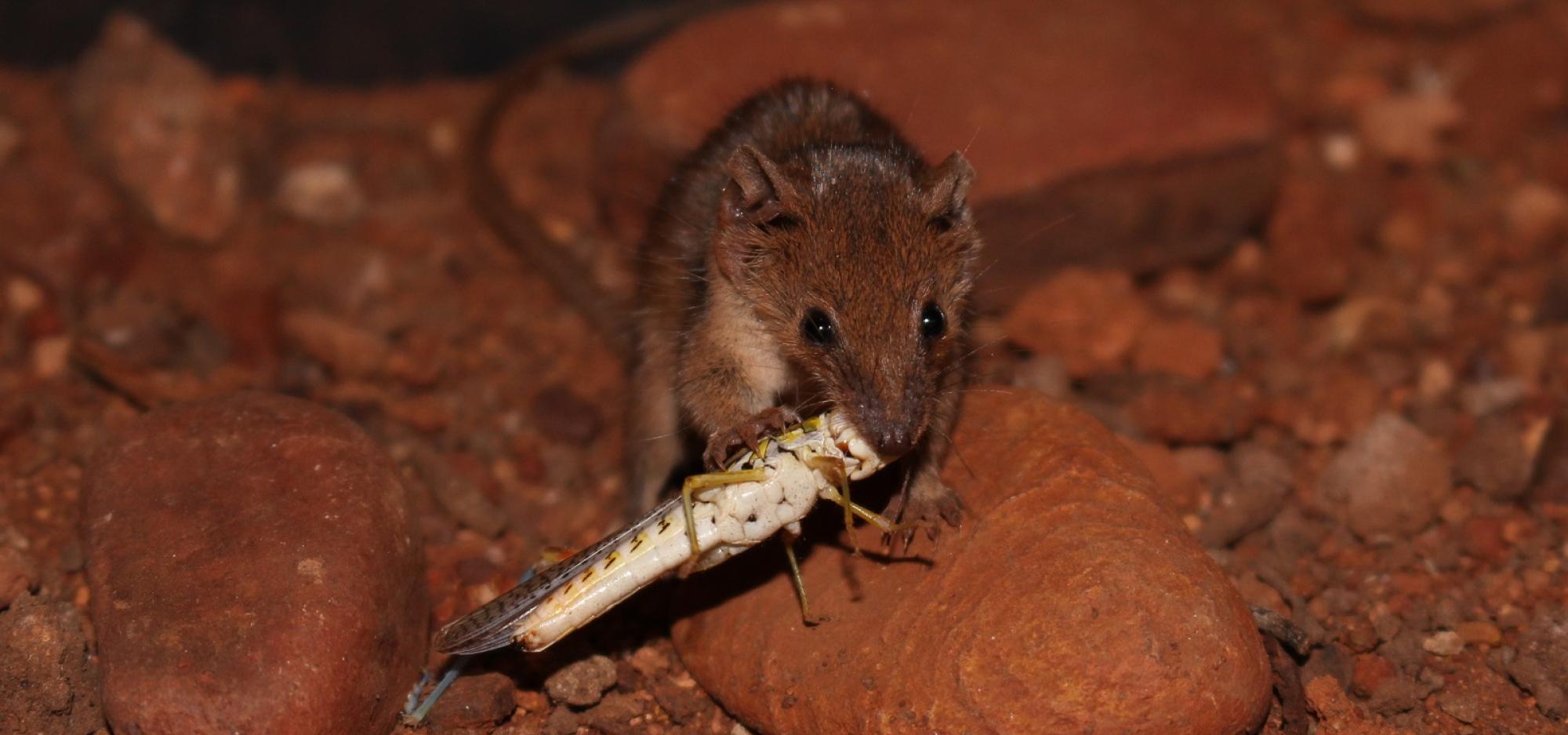
Meet the Museum: Mammal Discovery in WA
Mammal discoveries in Western Australia have never stopped.
In 2023 alone, two new species of planigales, tiny carnivorous marsupials, were identified in the Pilbara region, along with several new species of mulgara, planigales relatives. These findings show the wealth of undiscovered treasures within our state.
Join Jake Newman-Martin and Linette Umbrello from the WA Museum as they take us on a mammalian adventure of the minute kind.
Meet the Presenters
Jake Newman-Martin is a Curtin University Ph.D. student and a research associate at the Western Australian Museum. He is currently reviewing the taxonomy of Mulgaras and Woylies, small mammals whose fossils are often found in Western Australian caves.
Linette Umbrello is a Research Associate at the Western Australian Museum working on an ABRS Postdoctoral Fellowship with the Queensland University of Technology. Linette’s work focuses on the diversity of Australia’s smallest marsupial carnivores, the planigales and dunnarts, and she uses genetic and morphological information to describe new species.
Meet the Museum
Are you curious about the fascinating world behind the scenes at the Museum? This monthly program delves into the less visible parts of the Museum’s work, as scientists, researchers, historians and curators share their expertise and passions.
-
Episode transcript
Intro:
Welcome to the Western Australian Museum Boola Bardip talks archive. The WA museum Boola Bardip hosts a series of thought-provoking talks and conversations tackling big issues, questions and ideas and is delighted to be able to share these with you through the talks archive. The talks archive is recorded on Whadjuk Nyoongar Boodja. The Western Australian Museum acknowledges and respects the traditional owners of their ancestral lands, waters and skies.
Cecily Arkell:
Hopefully that means that everyone is here. Welcome to WA museum Boola Bardip, my name is Cecily, and I am one of the Museum’s Learning and Engagement team. And I’ve just gained the responsibility of Meet the Museums monthly talks. So, if you come regularly, welcome, you’ll see me every month.
Audience:
[laughs]
Cecily Arkell:
Ah, ok, so, let me just double check I’m telling you the right things. So, Meet the Museum, our month talks series delves into the less visible parts of the museum and the work that our scientists, researchers, historians and curators um, will be sharing their, experi, expertise sorry and their passions. So, before we begin, I was would just like to acknowledge that we’re meeting tonight on the lands of the Whadjuk Nyoongar people, and I pay my respects to elders past and present.
A few house keeping things just to start off with. Um, so, toilets, if you haven’t been here before are literally directly opposite the door. If you do go out to the toilet, and you’re more than welcome to of course, please just don’t shut the door because it will lock on you so if you just don’t pull the door too, then you’ll be able to get yourself back in. Um, no planned fire alarms but if you do hear the alarms then please just follow our instructions and I will actually defer to the security staff here as well anyway. But we’ll gather and exit out, which is basically the door that you guys have come in. Um, I think… So, the format of today, I’ll give a short introduction, we have two speakers tonight. We have two speakers tonight, ah, and then, they’ll both present and we’ll actually hold our questions until the very end of the two presentations as they are complimentary, and some things may be answered by the second speaker. Um, I think that’s about it.
So, for this month's Meet the Museum, we're delighted to welcome two of the museum's amazing science team. Linette is going to speak first and, I'm sorry, Dr Linette Umbrello, I should say, and excuse me for reading this, but I want to make sure I get it correct. Is a research fellow at the. Sorry, a research associate at the West Australian Museum working on an ABRS doctoral fellowship with the Queensland University of Technology. Linette’s work focuses on the diversity of Australia's smallest marsupial carnivores, the Planigales and Dunnarts, and she uses genetic and morphological information to describe new species. After Linette, we'll have Jake Newman-Martin speaking, and he is a Curtin University PhD student. Almost finished, which is great, and a research associate [pronounced like the verb]. Associate [pronounced like the noun], sorry, at the West Australian Museum. he's currently reviewing the taxonomy of Mulgaras and Woylies, small mammals whose fossils are often found in West Australian Caves.
As I said, we'll hear directly from Linette first. Followed directly by Jake, and we'll have time for questions at the end. So, without further ado, I'll hand over to Linette. Thank you very much.
Dr Linette Umbrello:
Thanks, Cecily. Well, I've already been introduced, so I don't really have to go through my title slide. I thought I would just start with how I got here and how I got to be working on small marsupials. So, I actually, my journey at the museum started in 2010 when I volunteered during my undergraduate degree. After that, I worked for about four years in the terrestrial vertebrate’s department. So, this is where we've got mammals, birds and reptiles. And then I pursued PhD studies at UWA, working on small mammals in the Pilbara. After this, I've been fortunate enough to secure, post-doctoral funding through the Australian Biological Resources Study. So, this is the only grant body in Australia that will fund pure taxonomic research. So, it's quite difficult to secure funds from them and this is being done through Queensland University of Technology and also with a senior colleague at La Trobe University in Melbourne. And just a sort of statement, I guess, on what I do or sort of what I've been doing during and after my PhD is using information from the physical appearance of an animal's body and also from the DNA to understand how mammals are related throughout time in space. So, looking at populations to species and how they are fitted in within the landscapes they occur in.
So, I thought I would start by going back to what we actually mean when we say discovery. So, this was the theme of today's talks. So, this is a term that really is kind of embedded within western science and is really heavily related to colonial exploration over the last 300 years, because of course, most of these species, especially mammals, were already well known by people who were at the original inhabitants of the places they occurred. And the discovery really is, European scientists putting names on them, their own European names. So really, when we're talking about species discovery, we actually mean naming and describing species, which is quite a different process. And this is what takes a lot of effort. So, I've likened this to gathering evidence from multiple sources to build a case that, you can prove that you've got this new species. So, we're kind of like detectives, and we use information from animals and the literature to be able to support our theories.
So, how does this work, well, we've got physical evidence which we can gather from the specimens themselves and these are housed within reference collections in museums like the Western Australian Museum. We've got historical documentation that we need to go through and this is a bit of scientific literature that dates back from when these animals were first discovered by Europeans, which can include, trying to decipher papers that are in different languages, sometimes with Latin, that you've got to work out how to translate. Another important thing we have to do to make sure that our new species is actually a real new species is compared to type specimens. A type specimen is what was used when the species was described. So, it really is the original important specimen that we use as a reference for what that species is. And then more recently, in the last 40 or so years, we also have genetic profiling. So, advances in human genetic profiling, which are often used in medicine and in crime, have really helped us in working on animals because we use exactly the same technologies, that are developed for humans, but translate them to the native species that we're working on. So, once we've got information from all these sources to support our claims, and we've got a really strong case that maybe we do have new species.
Okay. Now taking a step back to what I'm talking about today. So, what are Dasyurids? So, these are our carnivorous marsupials which are in the family Dasyuridae. And they're endemic to the Australasian region. So that means that they only occur in Australia and New Guinea and some of the islands around that area. They represent about a quarter of all of our non-flying mammals. So not bats. So, they're quite a significant component of our mammal biodiversity in Australia. And they range in size from the Tasmanian devil which I'm sure everybody knows what a Tasmanian devil is, to Quolls which are out spotted ones, Fascigales, Dunnarts and then Planigales which are the smallest. So, Tassie devils can be up to about ten kilos for a large male and Planigales can be two or four grams for a small species. They're all, predators, so they all eat other animals, and what they prey on really just depends on how big they are. So Tasmanian devils are going to be eating lots more mammals and carrion, whereas your smaller species can handle mostly just arthropods, although they all share in common, being ferocious.
So, they will basically take on anything that they can, and the smaller species often will eat mice or lizards like they’re… they’ll just go for it. So, we're lucky that they're small. There are quite a number of threatened species as well. So Tasmanian devils, all of the Quoll species, some of the Fascigales and some of the others are threatened and that's due to various, threatening processes like habitat clearing and, predation or competition with cats and foxes. And generally, we don't know much about most species. So, we do know a lot about some. We know a lot about Tasmanian devils, but we know pretty much nothing about most of the small species, which are the ones I work on.
So, Planigales, you probably never heard about these before. They are the world's smallest marsupials, and they are Australia's smallest mammals. And the term Planigale, that is the, the Latin name. But we use it as a common name because there’s no other, we don't have another one and it roughly translates to flat weasel and that’s because their heads are super, super flat and they specialize in squeezing themselves into cracks. So that's kind of their little niche. Which is why I getting this crazy flat head, and I've got a photo later to show you that. But yeah, basically, that just looks like a very small mouse of the pointy nose.
They have quite a broad distribution in Australia. And there's one species in New Guinea as well.
But they're absent from the southern cooler regions, and they don't occur in Tasmania. Until recently, only five species were known to science. And today, I'll be talking to you about these ones that I've circled in the Pilbara which are the new ones, and this map is just all of the records on Atlas of Living Australia. So, if anyone's used Atlas of living Australia, this is where all of the museum databases host all of their information and a lot of the government departments as well. So, it just gives us a really good idea of where species actually occur. So, I'll just go through these five species now. So, the first Planigale that was ever collected undescribed by Europeans was this one, Planigale maculata.
And it was described by Gould in 195… 19… 1851. Many of you may be familiar with the Gould prints. So, a lot of our early mammal descriptions came from those books, and this specimen, very unusually, have spots on its belly and there's photographs of this on the Natural History Museum website. So, it does have spots. That is not normal for Planigales. So the name maculata means spotted, but almost all of them, 99% don't have spots. It's just a weird individual. Then we had about sixty years until the next one was described by Oldfield Thomas, who was the curator at the Natural History Museum at the time. He was an incredibly prolific describer, naming hundreds and hundreds and hundreds of, mammal species.
And this one’s Planigale ingrami, which was named after the person who funded the expedition that collected it. And that one was from the Northern Territory. Then we had Planigale tenuirostris, common name is Narrow-nosed Planigale, and that was actually named by Ellis Troughton, who was the mammal curator of the Australian Museum or Sydney Museum, as it was called back then and this one occurs sort of in the central eastern arid area. Then we had the Archbold expeditions to New Guinea, which were run by the American Museum of Natural History. And Tate and Archbold describe this Planigale novaeguineae. No guesses what the name means for that, from the savannah lowlands near Port Moresby I think, and then the last one to be added wasn't until the early 70s where Aitken described Planigale gilesi. So they were, these were our five species that we knew existed.
Then, what happened after that? So, we had Professor Michael Archer, who did a lot of revisions of the morphology of lots of different Australian mammal groups. He did a review in the 70s, and he agreed that these five species were legitimate and the names that we use are actually what he decided
and found that the Planigale maculata at the time actually was considered Antechinus [another mammal genus]. So, he made sure that that one was actually a Planigale, which it is. But in his research, he found a few specimens that didn't really match all of these named forms, but there weren't enough specimens, or they were too broken. So, he didn't have good enough material to describe them. So that was sort of when we started thinking, maybe there's more diversity in this group than we think there is. Then we see the onset of genetic studies that started on Planigales in the 1990s, and they confirmed there was definitely two new species that didn't match any of the existing ones. But what happened?
Nothing really. then we see the onset of sort of a big expansion of collecting specimens, especially in the Pilbara, with the, sort of the development of mining in that area has brought a lot of people up into the field, looking at things, collecting things, and trying to work out what they are. So, then we now have a lot more specimens we can look at.
So, when Archer did his review, there was one Planigale specimen from the Pilbara which was not enough to go off and then now we have hundreds. So, then we’re left with the last bit, which is the hardest, actually describing them. Which involves a lot of just this.
So, what, how do we do it and what is the evidence that we gather? So, like I said before, we need that evidence for our physical specimens. So we get this by actually just looking at specimens, comparing them, taking measurements, taking photographs and then we can also do morphological analyses where we basically just do all these different statistics and see if we find things that are statistically different from each other or not and then we can also get our genetic profiles by sequencing DNA and see who's related to each other by doing phylogenetic tree analyses. And then if these things work out, then we have that information we can use to describe species, which involves writing down what it looks like and describing all different features of this bodies and then it's, you know, not real until it's actually been submitted to a journal for publication and then actually being published and part of that process is we have to make sure that we follow the rules of the International Zoological Code of Nomenclature, which is basically this governing body that makes sure that names that are proposed are following these rules so that they're legitimate. So, if you discover a new species and propose a name like you called up the media or something and said, I've got this new thing, I'm calling it this, that wouldn't be considered legitimate according to the code and then you actually create a problem. Because then someone's got to sort out this weird thing that just appeared that doesn't really follow the rules.
Um, and yeah, just, this process takes a long time. So, this particular project I'm talking about today, some of my colleagues who are at the WAM in the 2000s started the work, one of them since passed away. So, because they sort of didn't get around to finishing it, we picked up that baton and tried to get that work out. So it's really important to make sure that information is known in public and not just, you know, locked up in a filing cabinet and yeah, one part of that is like doing the work, sequencing the DNA that costs money, traveling to other museums to look at specimens cost money.
So, it's all this process that it's, it's really good that we can get funding for.
So, what did we find with our evidence? So, I've included a figure here from a paper that was before our work that just shows they did sequence some individuals from the Pilbara, and they found. Okay. Yeah, this one here we’re calling species one is definitely a new thing and then the other one they called ingrami two, which also came out as clearly a different species. And so, what we did was we just added way more individuals to double check that that pattern was the same and we found it was supported. Also, what's nice about these two is that they're geographically isolated from all other known Planigale species, so that that kind of is a bit of a takeaway that there's something different going on there.
Why don't they have a continuous distribution? Maybe they're locally adapted to this area. Um, and then, yeah, we found supporting morphological characteristics as well in their body, their colour, size, shape, um, their skull and this one here, that shows you how flat their head is. So that's a side, side profile of the head, super squished. Don't really know where their brain goes but, I don’t think they have to think too hard.
Audience:
[laughs]
Dr Linette Umbrello
So, who are the new species? So, we've got Planigale Kendricki which we gave the common name, The Orange-Headed Pilbara Planigale. Common names are a bit of a mouthful, and this species is quite commonly occurring in the Pilbara. So, of the two, it's most likely the one that people will encounter on surveys. It's the larger species and it tends to have a bit of orange coloration on the head, which is why we came up with that name, and then we've also got Planigale tealei, which is, specialist to cracking clay soils. So, the smaller Planigales in the group tend to occur on what I call black soil plains. The soils aren't really black in the Pilbara, but they're…. The heavy clay soils is where they hang out. So pretty much only ever captured in those areas and that one's just a bit smaller than the other one. So, they're actually new species.
And then we have to think of one way of describing species, giving out information that can actually be useful for people who are going to be capturing these things and trying to identify them. So, species descriptions, if anyone's ever tried to read them, they are really horrible. Yeah, just lots and lots and lots of text about specific little bits and pieces on an animal. But you need another textbook to help you decipher what the characters are. So, we thought we'd just come up with a quick and easy table, that summarizes key things, and then hopefully people will test that and tell me if it's useful or not.
So, some of the things that we put together was, okay, our Kendrickii is bigger, usually within this weight range whereas Tealei is smaller just within this weight range. They've got the different fur coloration. If you don't have things to measure them, you've got one that's basically kind of a little bit smaller than a house mouse. Most people know a house mouse, so that's a useful frame of reference and then the other one's way smaller than a house mouse. So usually what I get is people saying I've got a baby Dunnart, or I've got a baby something and I'm like, it's probably just this Planigale that actually is just tiny, like, it's not a baby. And then also where you're doing your actual survey work. So, if you're surveying on cracking clay, then you're most likely to get the species that occurs on that area, whereas the other one is more widespread within the Pilbara. So, in my experience in working on these groups, this is the one that everyone always finds. Hardly anyone ever, actually, I don’t think anyone's ever caught that the whole time I've been working on it. So, it's also, the cracking clays don't tend to be within the type of habitat that are surveyed for, mining development anyway. So that could be another reason why they don’t come up.
So, what's next for this project? Well, more new species. We've just been focusing so far on the Pilbara, but we have to cast our net wider to the rest of Australia. So that map that I showed before with all those dots on it, lots of them are actually not what they're currently considered. We've been doing some preliminary genetics, and we know there's two new species, at least in the Kimberley.
There's probably another two in the top end of the Northern Territory. There's definitely a new one in the highlands of New Guinea, but there's only two specimens in existence and there might be some subspecies going on in Queensland and Cape York. So that's kind of like a watch this space of what will be happening over the next few years and these are just some photos that some lovely people have taken to me, so that I've got a nice photo of a live animal to show people of what, what these things might be. So how are we sort of doing this next stage? We're getting a bit more high tech, so we're going to be using reduced representation sequencing. So, this is where instead of sequencing 1 or 2 genes, we use this method that basically chops up a genome into thousands of tiny little pieces. And then we use complicated computer programs to put it all back together and then give us information. But it just means we have lots, lots more data and I've got, over 200 individuals that are going to be done for that. So, it'll be the most comprehensive study we have on the group so far. We're also using X-ray microcomputer tomography which is CT scanning. So, a lot of people would know what a CT scan is in the medical sense, we can also do it for mammals. We basically use the same types of machines but scaled down and put them in there and get a high-resolution image.
So, this is an example of one of the ones that we've done, which is a 3D reconstruction of a CT scan and we're using 3D geometric morphometric analyses, and this is just a way of basically getting all this information from this physical thing, turning it into different types of info. So, what we do with that is we do 3D landmarking with basically points are put on different important regions of the skull, and then they’re analysed to look at how they, how they're differently shaped in between species. So, it's like getting heaps and heaps of information from a tiny little thing, which is going to be really exciting when we have it and then I think that was actually it.
So, I just wanted to highlight that these kinds of projects don't operate in a vacuum, and I've got my key collaborators who I'm working with every week on, on this project and the funding, of course, we couldn’t do any of it without that. And also, all of the amazing people who have contributed samples to me over the last two years. So, I've got some really nice people out there who, some of them were collecting things before my project even started, because they knew there was issues and it's been amazing to get them. Um, and also, we rely a lot on museum staff members at other museums to loan specimens. So, we loan specimens like you would loan a library book so we can look at them, send them back, take photos, and highlight for me was when the two Pilbara Planigales came out last year. First dog on the moon from the Guardian actually picked up on that and had a little cartoon, in one of the additions. So that was really nice.
Yeah, we’re skipping questions, so I guess we’ll change over the PowerPoint.
Cecily Arkell and Dr Linette Umbrello:
[inaudible conversation]
Audience:
[applause]
[sounds of presentation being changed over for approximately 30 seconds]
Jake Newman-Martin:
Um, I'm Jake Newman-Martin and I'm presenting on, using sub-fossils to better understand Mulgaras and basically, first I should give you a little the background on what are Mulgaras. As Linette explained, a, sorry, a Mulgara is a small kind of marsupial, essentially a Dasyurid, ah, yeah, Dasyurid which as Linette explained already, ferocious carnivorous marsupials native to Australia. Except Mulgaras exclusively live in, arid regions throughout Australia. They prey on small mammals such as, ah, small mammals, insects and reptiles and until recently, there was only two species named.
Originally, Gerald Krefft named the Crested-tailed Mulgara, Dasycercus cristicauda. Waite named the Brush tailed Mulgara, which was Dasycercus blythii and Thomas named Dasycercus Hillieri or the Ampurta and then that was synonymised, means, uh, it’s not a real one and then in the 70s, they were all synonymised together to make one species, and then a genetic test found that actually now there is two species. So, we went back to having two species again and it was found that it was mainly hillieri and cristicauda were the real ones and then in the early 2000’s, oh, no, no, no, those are wrong. It's sorry blythii and cristicauda that are the real ones and that's kind of where it sat for about the early 2000s until my research and so the way I got onto this research was for my honours.
I was doing a research project on Horseshoe Cave and basically Horseshoe Caves is a cave on the Nullarbor. Nullarbor caves are great because essentially what you get is through time, an accumulation of bark and essentially happens from owls. They eat small mammals like rats, Dasyurids, small macropods, all that. They, ah, consume it and then they regurgitate up an owl pellet which is full of bone, drop it to the cave floor and then as that goes over time, you get more and more and more. So, you get this nice stratigraphy of what's occurring in the caves in the Nullarbor through time. So, you get this, lovely accumulation of, data of spatial and temporal. And Horseshoe Cave was excavated in the late 60’s, early 70’s by Professor Mike Archer and trench one was dug, and my original investigation was basically to go, okay, well, Mike Archer didn't do anything with this material, he was looking for thylacines. Can we use this material to basically do anything with? Can we figure out what was Horseshoe Cave at the time? What was the Nullarbor at this time? Was it kind of more wooded, was more arid? and that involved a lot of IDing. I had to go through lots and lots of small mammals, rodents all of this material, I think in one layer for one species alone there was four hundred individual jaws of little, tiny mouse jaws. But this data is very important because we can use this for environmental change. But the one thing that bothered me was the Mulgaras, because I needed to ID, as you can see here, these two in particular jaws. And how do… Essentially, I need to know how to do that. Because I had two jaws and at the time there were two species identified. Which one was which was a. blythii? was b. blythii? So essentially, I wanted to look at the literature, see what other people had had written. Has someone written down this how you identify a Dasycercus jaw or a Mulgara jaw, sorry, based on these characters? Is there a way that you could just compare the two species to each other and know the differences? Well, based on the literature at the time, no one knew. The literature basically had said that everyone who's ever found Mulgara is in cave deposits had gone, I don't know, and put it in a “too hard” basket. So essentially when you see this in that it means indeterminant, we don't know. So, all of these spots on this map are every single Mulgara that had been found at the time. We can say the blythii, which is the brush-tail, has a nice distribution, cristicauda has a nice distribution and all, all the green is sub-fossil material, which again, we don't know.
So that kind of doesn't really tell us anything because it'd be nice to know where both species had occurred. It would tell us for conservation reasons. Where should we put these species back if they're not on the sound there? You know, if these populations were to be decimated by cats and foxes, we could know more about their decline. It would be so useful to know this information, and also, for my personal reasons, it bugged the shit out of me, because I really wanted to know what the hell was in my deposit.
So, I decided to go to the WAM collection and just directly compare these specimens to each other. Okay, well, if I hold a thing, that in the WAM it says is the Crested-tailed Mulgara next to my thing, what does it say it is? And there's a problem with that, because every time I held a specimen from Horseshoe Cave next to a specimen that was definitely blythii or definitely cristicauda, it didn't match. So, this top specimen here was identified as a Crested-tailed Mulgara from Queensland. And this specimen was also identified as a Crested-tailed Mulgara but from WA. This, these are two scale with each other, and you can see that they look very different from each other. So, you can see that this guy has these large kind of protrusions just in front of the eyes, this guy is just way bigger overall.
We got these kind of, crests on the back of the skull. There was just heaps of differences. But they also didn't match my material. So, I was seeing two in horseshoe case, morphologies and then two in the collection. And then I also found another one in the collection. So, I was seeing five overall morphologies that kind of really didn't make sense.
So, does that mean that with three, sorry, three new species present, does that mean I was seeing some kind of sexual dimorphism going on? What, what would what was going on? Well, we couldn't tell because again, there was no information in the literature. So, we needed to do a full species review, essentially just discuss this and figure it out essentially was what Linette said, we needed to collect evidence. We needed to look at the morphology and, you know, figure this out because all the information at the time was about what does the creature look like externally. Oh, well it’s got this, this crested tail, it's got this brush tail, it's got this coloration. No one has discussed the bones and without discussing the bones, you don't understand the information correctly. Because if you are only look at the external characters of this animal, you are not fully understanding this animal and to do this, we had to measure a lot of specimens. This means that we had to go through every museum in Australia. So that's the, AMS in Sydney, it’s the National Museum of Victoria, it’s the WAM here, it is the MAGNT in Northern Territory, it's the Queensland Museum, it is the CSIRO collection in Canberra, as well as the Natural History Museum.
So, I actually have to travel to the UK and look at the holotypes there. So, this is the holotype of the Dasycercus hillieri, the Ampurta, which was the one that, as I told you earlier, was synonymized. And that's a lot of work and I had to look at a lot of specimens and that means I could… I looked at a lot of specimens from lots of different localities, hopefully capture as many different species or different morphologies that were present in the population possible. And the way to do that, and it's probably looks a little scary, is by all of these different measurements all over the skull and that allows us to capture the shape of the skull. So rather than just capturing the length, width, which is a kind of a two-dimensional measurement, we catch length, width, height, length of the nose, length of the teeth, width of the teeth, height of the teeth. Well, all these different measurements. And when we put that into a program, that program kind of calculates and tells us about how much this one varies from this one and how much this one's like this one and essentially tells us how these specimens are related to each other based on the shape of the skull and the overall dimensions that are present, the morphology.
Um, and what we ended up finding was, there were six species present, not the originally identified, two or three. So, this one here is hillierii Which was the synonymised one in the past. This one here was, a new species I named woolleyae after Pat Woolley, who had done the original, early 2000’s review.
This one’s blythii, so that was correct, that was a species as originally identified, the Brush-tailed Mulgara. Ah, and then this one is archeri, I named after Professor Michael Archer, who had done a lot of work on Dasyurids in general in the past. This one was a true cristicauda, so, you remember from before we had that one and that one was supposedly the same thing. That's not. And then this one I named, Dasycercus marlowi. I asked the Basil Jay Marlowe, who was a curator at the Australian Museum, back in the 80s and did a lot of work on Australian marsupials. Um, and that's a huge jump from our original identified two species, which is really surprising because no one had thought of this before. In fact, people were synonymising, as I said, these species, people were reducing the amount of species. So how is it possible that we have six species? When we had thought we only had two? It’s because they were ghost species. So, of the species, of these six species, there are two that are currently alive. So, if I told you, oh, we only have two species, and you go out to the field and you’re looking for Mulgaras. You're only going to find two because there are only two alive. So, no one had looked in the fossil record and no one knew how in the fossil record [inaudible word] identify, sorry, identified the species. So, it was the perfect storm. So, these species were never found because no one was looking for them. No one know how, uh, knew how to find them and there was only two species left. You're not going to find new species if you're only, know, er, think there are two left. So, this highlights why we needed to include sub fossils when we were doing our taxonomic review, because it meant that we could capture diversity that had previously not been thought to exist.
But this obviously had a lot of, pushback. People thought that, well, maybe this is a male and this is a female. All these other different reasons as to why it could be. All of these are males. All of these are adults. There was a lot of evidence that we collected, and we finally gone through this, and it was still a very surprising result. And then we were able to fill in this nice map that we had before, where we had the problem of all of this region being unidentified, and now we have a better understanding because of it of where are Mulgaras found, it means that we can have a better understanding of our conservation approaches.
Unfortunately, as I said, four of the six species are extinct. We think sorry, that might not help long term unless we are able to translocate species that may be able to be, replace others. But it can inform conservation decisions, not just for Mulgaras, but other species. If we find this same logic to other species, great, fantastic. But there are probably other species out there, other ghost species. And there is definitely more work that does need to be done overall. Currently, there probably are 39 extinct species in Australia. That list is probably going to grow. If we continue to include sub-fossils, we're going to get a high diversity of species. If we've just turned two species into six, imagine what will happen if we start doing that for all of our Australian species, and this means that overall, we'll have a greater understanding of Australia's biodiversity. Thank you.
Audience:
[applause]
Audience member 1:
I’ll be brave and do the first one. About the sub fossils. So how… Do we know roughly when these, ghost species went extinct?
Jake Newman-Martin:
Yeah, so it looks like with a few of them, it was basically Europeans arrived. One or two specimens were collected, and then they pretty much disappeared, and they’re never collected again. So in about 1920, we have some live animals collected and then they were put in museums and then people go out there 1940s-ish and never, they’re never seen alive again. So it could be that cats are going through at that time, foxes. Or it could have been that they're already struggling at that time and some other reason they're going extinct. But it's most likely that catches of foxes are wiping them out. Because I believe cats arrive on the Nullarbor where one of them is extinct, about 1894. Um, so it's probably that they're already struggling by the time the Europeans collect them. And that's probably the issue, is that a lot of these species are either in areas where there weren't collected, ah, collections occuring a lot. So, like with, Linette, your, your Pilbara species, essentially very little collections were occurring in a lot of arid areas and so Europeans would go through want to go I think I found this, there’s only one specimen that exists, It looks like the other thing, who cares, Cats come through, wipe everything out, you can never collect it again. So, the sub fossils are important for that reason because again, they represent everything through time. So, you have hundreds and hundreds and hundreds of samples of that.
Cecily Arkell:
Thank you. Any other questions at all? I have one. Just having... we were discussing this earlier. So, one of the holiday activities we did these past holidays was we actually dissected owl pellets with students, with children, 8- to 12-year-olds who were fascinated by it. So, in terms of you, collecting the samples, were you dissecting owl pellets? or was that just kind of how they collected in the cave?
Jake Newman-Martin
So that's how they collected in the cave. But as, so for Horseshoe cave for instance, it goes to about 16,000 years ago. So over time, obviously the fur, feathers, all of that disintegrates,
Cecily Arkell:
It would have made it so much easier because there was so much fur in those pellets. I'm sorry. [laughs]
Jake Newman-Martin:
Yes and no. I mean, you're kind of dealing with a very broken, very shattered kind of accumulation.
But it definitely is a lot less smelly, so yeah.
Cecily Arkell:
Oh, they weren’t too smelly, they weren’t as bad as the squid we dissected but anyway, thank you. [laughs]. Anyone else have a question at all? Excuse me. Just, just kind of stand behind you. That's fine.
Audience member 2:
You mentioned that you were looking into what the Nullarbor used to be like, I think….
Jake Newman-Martin:
Yeah, so that was the original aim of the honours.
Audience member 2:
Yeah. Did you end up, like, finding much about that?
Jake Newman-Martin:
Um, so my work it's unpublished at the moment but it did compare with a lot of the previous work, which has shown that it was a lightly kind of an open woodland forest and we could kind of see that going backwards. So, as I said, my work, my deposit only went to about 16,000 years ago. But at that point, we were starting to get a lot more woodland adapted species and you could kind of see that as you map. So, this species is arid adapted, this species is woodland adapted. So, at the top, you know, you see, you know, a few, woodland adapted species. But as you go down, you start to increase in their number and abundance and when you chuck dates on that, it becomes much more obvious as you can see, when these kind of extinction events occur through time.
Audience member 3:
Okay. Thank you. I have a question for Linette. I have zero background in anything biology or even data. How do you survey these areas, like up north in the Pi, Pilbara? How does that actually work?
Is that like wildlife cameras or…?
Cecily Arkell:
Great question
Dr Linette Umbrello:
Wildlife cameras are not super useful for the smaller, Dasyurids. So sometimes it can be difficult for them to trigger for them. But they're just really, really difficult to distinguish from camera trap images. So usually, a camera chat might be directed at something over there, or it's set up so that it's taking a photo like this, and they tend to just all look like the same thing. So, we have tried to tell them apart with camera trap images in Queensland and we’re just like, “oh, it's one of two things”, but really, it's yeah very tricky.
So yeah, usually that need to be live caught and that can be done really through only two, well there's a few different methods. So, Planigales are so tiny that they actually don't often trigger the treadle mechanism in most of the traps that we would use. So, we often use these aluminium box traps that are kind of like for catching rats and they're just, they're just too light. So rarely they'll be caught in one of them. And often it can be difficult to come up with the right bait recipe that will attract Dasyurids as well.
So, you need to have some kind of meat in there and as probably all of you know, we have so many ants in Australia. So, wherever you're putting any type of meat in your traps, you have to be so careful about ants. so often we'll use pitfall traps. So, these, buckets or PVC pot that are dug into the ground and then set with a drift fence over the top. So, an animal that's just out at night running around will encounter the drift fence, run along it, and then fall into the pitfall trap. So that's the best way to catch Planigales and they’re a pain when you have to put them in the clay soils and the rocky soils which is pretty much most of WA. Great in sand, but the Planigale species, they’re just not really sand specialists. So, yeah, that's sort of the most reliable method really, um yeah, yep.
Cecily Arkell:
Well, any other questions?
Dr Linette Umbrello:
Any questions about Dasyurids? Or working at a museum? Or any general questions?
Cecily Arkell:
I'm going to hog it again. I got another question about their flat skulls.
Dr Linette Umbrello:
Yes
Cecily Arkell:
Has there been any studies done on, um, like the, the, flat skull species, brain size and maybe even capacity compared to, um, other… [cut off]
Dr Linette Umbrello:
No. So, with the, the 3D stuff that I'm doing, I'm collaborating with this researcher at Flinders University, Vera Weisbecker, and she has worked on a bunch of different Australian mammals. So, she's done heaps of work on wombats and koalas and looked at, what happens when animals go in captivity and how that changes their cranial morphology. Turns out a lot.
and it's driven a lot by diet. So, in captivity, obviously you can't replicate the diet of the wild animals and different things happen to their skulls. Um, yeah and then we've talked about that. So, there are apparently some bats that also, not Australian bats that have these super, super thin skulls because they squish themselves up into crevices and there's some birds. But it's something that we've sort of thought about, like, what's the mechanism of, you know, which bones are actually being reduced and you could have your marsupial example compare it to a placental mammal or whatever.
Cecily Arkell:
And is the purpose of it, basically to get their food sources in the cracks and crevices.
Dr Linette Umbrello:
No, it's sheltering. So, they, they come out of the, like that's just during the day or whatever from predators or something. They're active foragers. So, they'll be out at night. Yeah, it's just this weird thing that's happened in this group. Yeah.
Cecily Arkell:
Yet another weird Australian animal.
Dr Linette Umbrello:
Yeah
Cecily Arkell and Dr Linette Umbrello:
[laugh]
Audience member 4:
So how actually big are the Planigales? Because it said, like, weights, but I don't know how big that is in sizes and then how big are their babies?
Dr Linette Umbrello:
Well, so an adult, ranging from a Planigale maculata, which is the big, the big beefy Planigales. So, their body size probably about like that [gestures with hands] with the tail of, you know, maybe that long [gestures with hands]. So, like a whole size, there [gestures with hands]. And then the really tiny ones, the ingrammi’s are like body size like that [gestures with hands]. Yeah. So, they're, five centimetres? I don’t know what the length would be.
Cecily Arkell:
You can see how they've been missed quite easily in previous studies.
Dr Linette Umbrello:
Yeah. That's why they don’t trigger the traps because they literally weigh like three grams. So, they’re not gonna, uh, yeah……
And then so their babies, well, they're marsupials of course, so, they are giving birth to teeny, teeny teeny tiny little jellybeans that I don't know if anyone's likened them to something, but some species, they'll be like, it's like a pinhead is the size of the poucher the Joey because, yeah, they're born underdeveloped. So, they're just a tiny little thing with a mouth and two arms that climbs into the pouch and latches onto a nipple, and then grows into another tiny little thing.
Audience:
[laughs]
Dr Linette Umbrello:
Yeah. So, I'm sure someone's looked at that… but…. yeah.
Cecily Arkell:
And do we know how many young they might have at a time?
Dr Linette Umbrello:
Yes. So, what I found, so in the literature there's, discrepancy between how many nipples they have, which we assume that means that's how many babies they can have. So, some people have found they have six, some have said they have twelve, some have said ten, eight, whatever. But I've looked at a lot of specimens and I'm pretty sure they all have twelve. It's just they're so hard to see, they're so, so, so tiny and it depends on the reproductive maturity of that female. So, if she is young and I was only just left her mum, she's not going to show any reproductive signs.
And then if she's had pouch young, she's going to show she's had a bit of a pouch developing some elongated nipples. And their pouches are not really pouches. It's more just a little flap. So, they kind of a bit a bit, basic on the, the pouch development.
Cecily Arkell:
And is twelve nipples and average from marsupials or…. It seems like a lot.
Dr Linette Umbrello:
Ah, it’s a lot, it is a lot. I actually…. I'm not famil…. Yeah, there’s …. the ones I work on. So, I work on Dunnarts as well and I've worked on Northern Quolls before. Twelve is definitely a lot. Yeah, so, it's, it's all about maximizing that reproductive output, especially because these species are occurring in arid areas or areas with unpredictable rainfall. So, I want to have as many babies as they can, when they can, but often they won't have twelve. They'll give birth to twelve, but they won't have twelve then, uh yeah.
Audience member 5:
This is potentially for both obviously talking about how the populations have been reduced, probably by feral cats and foxes and stuff like that. Is there evidence of even, competition with introduced rodents like, black rats and house mice.
Dr Linette Umbrello:
Well, house mice are everywhere, so, um, but they have quite different diets, so I don't think… one thing with… maybe not for the Mulgaras but all of the other smaller Dasyurids haven't really shown population decline compared to pretty much every other mammal in Australia. We still have these relatively stable populations. I mean that's probably not true across the board and there's definitely areas where we know there's declines going on. Some of the larger Dasyurids might have some issues overlapping with black rats, but black rats are not widespread in central Australia, so they tend to be more associated with urban areas, although their pop... the population of black rats, has been expanding and just continues to expand. So, in places like Kakadu National Park, which have had horrendous declines in all of their native mammals, the native rats that occurred there are now locally extinct, and those niches have been filled by black rats. So there definitely is like, you know, black rats out there and they're just a generic rat that can do whatever rats do so they can fill that niche. But the Dasyurids are quite different. So, you know that they don't have the potential to be omnivorous or eat seeds or these other things that black rats and house mice can go for.
Jake Newman-Martin:
And with that too, so with the Mulgaras, that I was talking about, they’re the first reported that we know of, Dasyurids that have actually gone extinct. So, with Dasyurids, in general they have declined, but they've never really gone extinct or have had that low population. Usually, it's more of a retraction in overall range. But Mulgaras is in general eat anything up to and including their body size. So, I don't think they’d struggle from rats or even a house mouse.
Cecily Arkell:
It's kind of hopeful [laughs]
Jake Newman Martin:
Well, I mean it’s the cats that are the main problem.
Cecily Arkell:
Yeah.
Audience member 6
So, you all work really hard, to do this. I guess it's not your area, but my thing is, why are we not doing more to save them? Like, if the cats are a problem, which we all know. How do you go about making… you know, you work hard to do this for a reason. Why are we not fixing the problem, then?
Dr Linette Umbrello:
Yeah, well…
Audience member 6:
Who’s not listening? [laughs]
Dr Linette Umbrello:
Obviously, it is a political issue to be spending money on conservation, and Australia does not spend that much. Cats is like an unsolvable problem as, there has been a lot of research in managing cats. You know, they're super hard. They don't, they don't like eating baits like foxes do and they're very secretive and they can survive on hardly eating anything. But local control does work really well. So, you might have places where they're targeting and going out and regularly shooting cats or catching cats, and that can have a quite strong impact on local areas. And then we also have safe havens as well, which are fenced reserves or islands which are free of predators. But that's obviously not a long-term solution. So, it's kind of, I don't know, cats are definitely here to stay. and we do have species that are co-occurring with them. I think being able to control the cumulative impacts, so if we've got habitat destruction, degradation from cattle or camels or whatever, dealing with that is also part of helping things persist, where there is feral predators. So, if there's enough grass for them to hide under, then they've got more of a chance than a landscape that's just totally decimated, and it's the same with wildfire and… Yeah, so it's a very complicated issue. Obviously, we'd all love to see more money being put into conservation. but, I mean, cats are often a scapegoat, but a lot of the issues is about habitat fragmentation and destruction, and that's not really politically attractive to address. So yeah.
Cecily Arkell:
All right. Any further questions at all, even if it's about working at the museum or being an awesome scientist?
Audience member 7:
I kind of have one that's related to fire. So obviously there's been a lot of research into, traditional burns and even just DBCA burns for the benefits to Australian flora, essentially, because most Australian flora
needs that sort of fire to germinate seedlings. Has there been much research into the potential for how damaging fire could be to such small Dasyurids, Planigales, things like that? Because there's all this research supporting why fire is good and it is good for flora, but then there's not too much looking into the small little mammals.
Dr Linette Umbrello:
Um, I, my knowledge of that is really focusing on arid zone fauna, so I can't really comment too much on like what forest burns in the southwest would have impacts. But I think what's important is the type of fire. So, if you're looking at these traditional practices like you suggested, which is, you know, cool, dry season burns that are small and happening in a mosaic and creating a heterogeneity of habitats and different ages of habitats, that's a good thing. But if you have, really hot, wet season burns that are, uh, late dry season burns, that go through basically the landscape and just totally clear it, obviously that's bad. What we found with, looking at the population genetics of the small marsupials that I work on is they really don't seem to be that impacted by wildfire, from what we can tell. So, one of the species I work on, the stripe-face Dunnart, is known to be the first colonizer after wildfire. So, they basically kind of take opportunities with that landscape has been denuded. I don't know what they're doing or what they're eating. But I know researchers who have been trapping for other things, and they’re just getting all these stripe-faced Dunnarts that are apparently fine living in this totally dead landscape. So, they're already kind of pre-adapted to cope with these really harsh changes because they're living in a really unpredictable landscape. So, I think the reason why they're still there is because they're very resilient to all these changes anyway. But I'm sure that there are other groups that don't respond well and they're probably the ones that are quite shall we say…. who's here tonight who works on brushtail possums? were widespread in the Pilbara. Now only occur in 1 or 2 spots. So, things like that fire and cattle and all these changes that are happening in that landscape, that's not helpful for them, but seems to be okay for Planigales.
Cecily Arkell:
Any further questions at all? No. Well, I will say thank you so much for a really, interesting talk. So, another round of applause for our lovely presenters tonight, thank you.
Audience:
[applause]
Cecily Arkell:
Okay. So, I would like to, sincerely thank both Linette and Jake for, coming along and, yeah, persevering with our technical issues and things like that. So, thank you for that. I apologize in advance. As I said, if we can't actually get back to this talk on the website, we're fingers crossed that our little device here is actually gonna help us out. Just before you leave, just a quick reminder of the next couple of the museums. So, May 16th, we have, a pretty exciting talk coming out actually. This is super exciting, of course, but if you, have heard about the elusive night parrot, we actually have a panel discussion, so it be a slightly different Meet the Museum, and so… We’re having a panel discussion of experts, with a keen interest in the night parrot, and we have a beautiful, specimen. we were lucky enough to have up in our wildlife gallery. So, it will be a slightly longer Meet the Museum from 5 to 8 p.m. So please, check out the website for that. And June 20th, we, have very lucky to have Professor Gretchen Benedix from Curtin University and she is actually speaking about our current traveling exhibition, so “Why Humans Should Explore the Moon.” So, I'm sure that will be a very interesting topic as well. So as always, all these details are on our website under the banner of talks. If you go to WA Museum Boola Bardip and have a look under the talks banner, tickets are available through there. So, thank you all very much for coming along and again, apologies for the noise next door. They’ve been here all day; I think they're just so happy to be released. So, thanks once again and thank you for coming and safe travels home.
Outro:
Thanks for listening to the talks archive brought to you by the Western Australian Museum Boola Bardip. To listen to other episodes, go to visit.museum.wa.gov.au/episodes/conversation where you can hear a range of talks and conversations. The talks archive is recorded on Whadjuk Nyoongar Boodja, the Western Australian Museum acknowledges and respects the traditional owners of their ancestral lands, waters and skies.
More Episodes
Gender-related violence isn’t talked about often enough, but it happens in WA. Often, conversations centre on victims and perpetrators, warning signs and cycles, breaking points and crises. But what happens next? How do we move toward recovery, reconciliation, and positive change?
We know ferns have existed on Earth for millions of years, but just how closely do ancient ferns resemble modern ones?
By drawing on First Nations knowledge systems, cultural practices, and research methods, this presentation will showcase how climate adaptation and mitigation strategies that respect and integrate Indigenous knowledges and practices can help sustain well being.
Have you ever wondered what it is like working with fossils every day? Helen Ryan from the WA Museum shares her work in discovering, uncovering, preparing and preserving ancient life.
Hear from Dr Amanda Ash from Murdoch University’s School of Medical, Molecular and Forensic Sciences as she delves into the complexity of parasites and their importance.
Join us for a journey into the ancient world with Dr José Galán, a renowned Spanish Egyptologist and director of the Djehuty Project.
Curious about the creators behind our Megalodon head in the Wild Life gallery? Join the makers from CDM: Studio and peek behind the scenes as they share their process of designing, building and delivering museum exhibits.
Discover what we can observe about the Moon, learn about our current knowledge, and understand the importance of returning to its surface!
Discover the elusive Night Parrot at WA Museum Boola Bardip! Join us for an exclusive panel discussion with experts Penny Olsen, Allan Burbidge and Rob Davis.
Discover the remarkable story of Wayne Bergmann, a Nyikina man and Kimberley leader who has dedicated his life to his community, in this moving memoir of living between two cultures.
Celebrate Perth Design Week with a robust panel discussion focusing on design and business.
Talk series hosted by Geoff Hutchison that explores who our young selves were and what became of them. This week hear from Sabrina Hahn.
Navigating the delicate balance between the preservation of the Conservation Estate and our cherished and loyal feline companions is both a challenge and a responsibility.
How much will we look to the language of activism in finding the way towards reconciliation in Australia?


